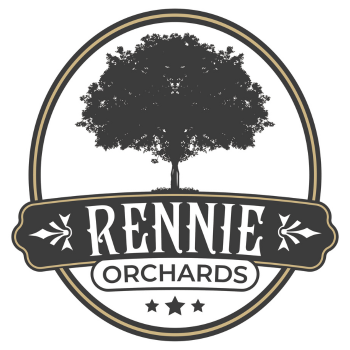Despite the fact that the sun is typically a plant’s greatest ally, some plants are able to flourish in partial shade and can add a vibrant touch to the corner of your garden.
This list has the top 12 trees that you should plant in your garden, bringing color and visual interest throughout the year. Even when they lose their leaves, their bark brings a unique appeal to the yard.
Read on for more details on these great shade varieties!
1. Japanese Maple
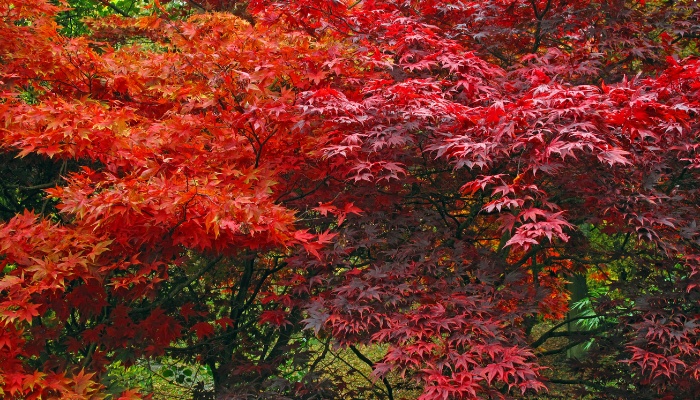
Acer palmatum
Japanese maples are known for their delicate leaves and smaller size. Growing well in the partial shade, this variety can be planted near a house where it will add a pop of red or green as the leaves grow in during the spring.
The leaves turn burgundy or partially yellow in the summer and then drop in the fall and winter.
- Best for Grow Zones: 5 through 8
- Mature size: 15-20 feet tall and wide
- Key advantages: Small habit, slow growing, shade tolerant
- Potential drawbacks: Susceptible to sun scorch, leaf diseases, and Japanese beetle attacks
2. Dogwood
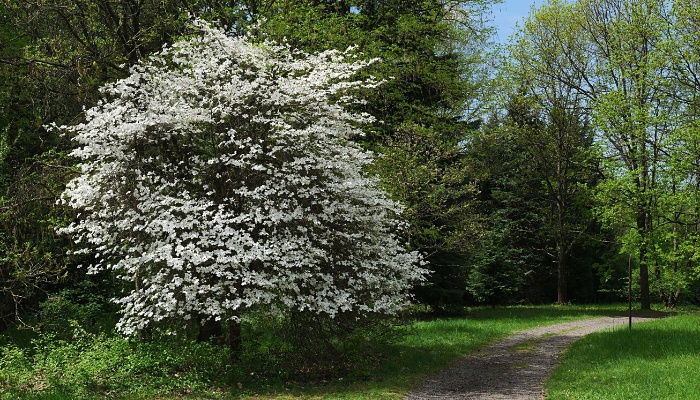
Cornus spp.
A tree native to North America, dogwoods bloom with copious pink or white flowers in the spring. While they are deciduous, they begin to bloom from March through May, and flowers will stay on the tree for weeks.
Eventually, a dark foliage backdrop will fill in as the summer progresses with the leaves transitioning to a deep red in the fall before they drop.
- Best for Grow Zones: 5 through 6 in full sun and 7 through 10 in partial shade
- Mature size: 15-30 feet tall and wide
- Key advantages: Easy to grow and maintain, flowering, shade tolerant
- Potential drawbacks: Can grow large, flowers are poisonous and odorous
3. Crape Myrtle
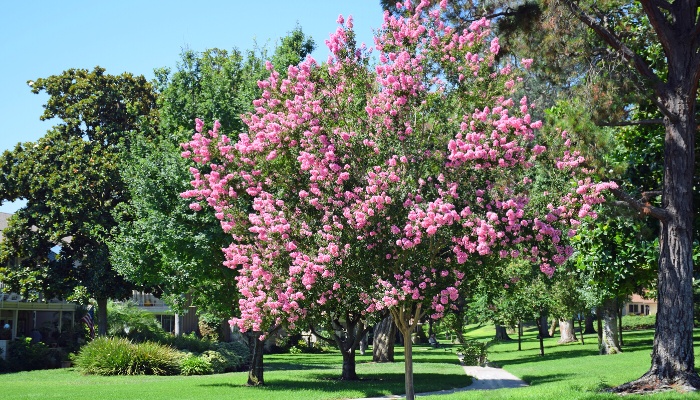
Lagerstroemia indica
Bright pink, white, or purple flowers will bloom in the spring and last all through summer! With its exfoliating bark and compact stature, this variety can be grown as a small tree or shrub.
Blooming shortly after its leaves form in the spring and with flowers staying present on the tree into early fall before leaf drop, this tree will bring color to your landscape for the majority of the year.
- Best for Grow Zones: 7 through 10
- Mature size: 15-25 feet tall and 6-15 feet wide
- Key advantages: Long flowering period, drought and heat tolerant, small size
- Potential drawbacks: Can be prone to certain pests and diseases, bark can be messy
4. Red Maple
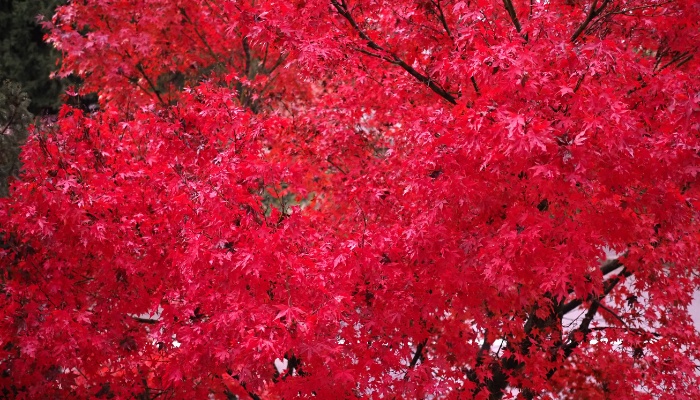
Acer rubrum
With a stunning display of fall color, the red maple is always sure to catch your eye in the fall! With its large size and an amazing array of colors in the fall, you won’t be disappointed growing this variety.
Its dense green leaves in the spring give way to red, orange, yellow, and golden leaves in the fall.
- Best for Grow Zones: 3 through 9
- Mature size: 50-75 feet tall and 20-30 feet wide
- Key advantages: Adaptable, cold hardy, amazing display of fall colors
- Potential drawbacks: Its wood can be slightly brittle and is susceptible to breaking in inclement weather
5. Tupelo
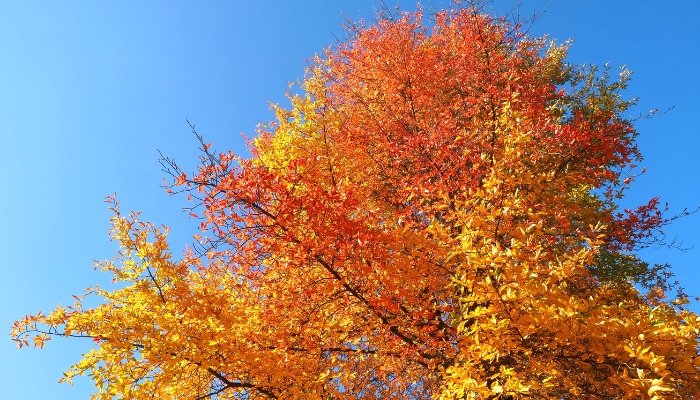
Nyssa spp.
A tree that prefers swampy or moist conditions, a tupelo tree is great for lower elevations of your yard and areas prone to flooding.
While it does flower in the spring, its flowers are small and unassuming but will grow into edible purple berries once mature. In the fall, its leaves turn vibrant red, orange, and yellow.
- Best for Grow Zones: 4 through 9
- Mature size: 30-40 feet tall and 15-25 feet wide
- Key advantages: Flood tolerant, easy to grow, larger in size
- Potential drawbacks: Tall growing, attracts birds and critters with fruit
6. Eastern Redbud
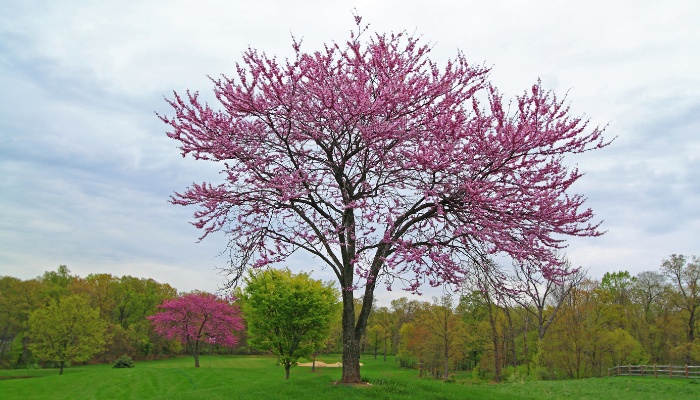
Cercis canadensis
In the spring, this tree is a show-stopper! It will begin to bloom with bright pink buds in the spring making it look like an explosion of pink.
Through the summer, it will grow heart-shaped leaves that start out purple and then transition to green in the summer, finally turning bright yellow and orange in the fall before they drop at the end of the season.
- Best for Grow Zones: 4 through 9
- Mature size: 20-30 feet tall and wide
- Key advantages: Smaller habit, beautiful colors from bloom through leaf drop, adaptability
- Potential drawbacks: Produces seed pods that drop and draws animals and birds with its fruit
7. American Hornbeam
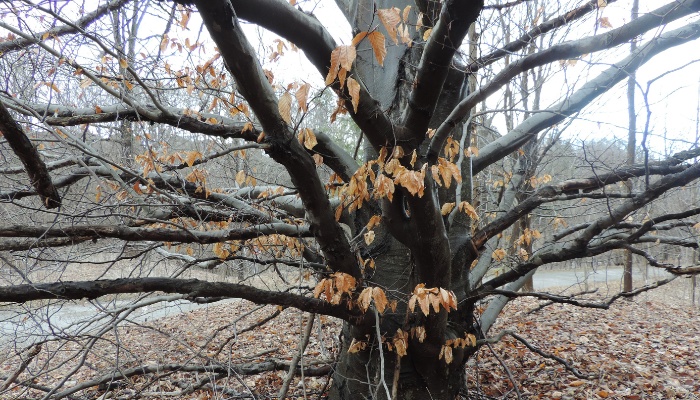
Carpinus caroliniana
Growing well in high-shade areas, the American hornbeam is great at bringing color to the shadiest part of your landscape.
Its leaves are dark green in the spring and summer, transitioning to orange and red in the fall. It produces samaras, also known as “helicopter seeds” that drop in the late summer and fall.
- Best for Grow Zones: 3 through 9
- Mature size: 20-40 feet tall and 20-30 feet wide
- Key advantages: Highly shade tolerant, easy to maintain, grow well in wet conditions
- Potential drawbacks: Does not handle drought well, drops samaras
8. Japanese Zelkova
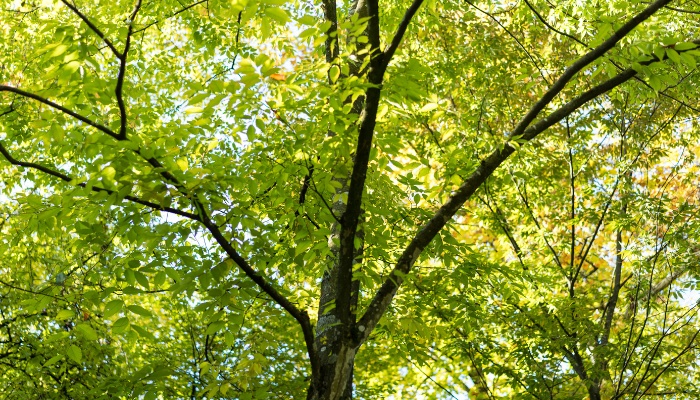
Zelkova serrata
A tree great for ornamental plantings, the Japanese zelkova has been planted in landscapes since it was introduced from East Asia in the 19th century.
In the spring, its bare unique bark begins to grow small green elm leaves, and as the seasons progress, colors of orange, yellow, copper, and red can be seen before the canopy begins to drop its leaves.
- Best for Grow Zones: 5 through 8
- Mature size: 55-75 feet tall and 30-50 feet wide
- Key advantages: Resistant to Dutch elm diseases and the elm leaf beetle
- Potential drawbacks: Large size, grows multiple branches that are prone to breaking
9. Silver Maple
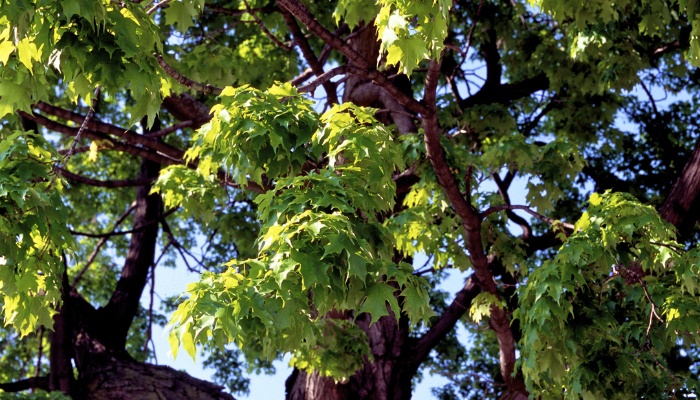
Acer saccharinum
Growing medium to large as many maple trees do, the silver maple is known for its silver sheen that is visible on the underside of the leaves when the wind blows.
This is a fast-growing tree and is one of the most common in North America, easily growing in almost any climate. In the fall its green leaves will transition to yellow and gold.
- Best for Grow Zones: 3 through 9
- Mature size: 50-80 feet tall and 25-35 feet wide
- Key advantages: Easy growing, large size, water tolerant
- Potential drawbacks: Fragile limbs and bark, shallow roots
10. Ornamental Cherry
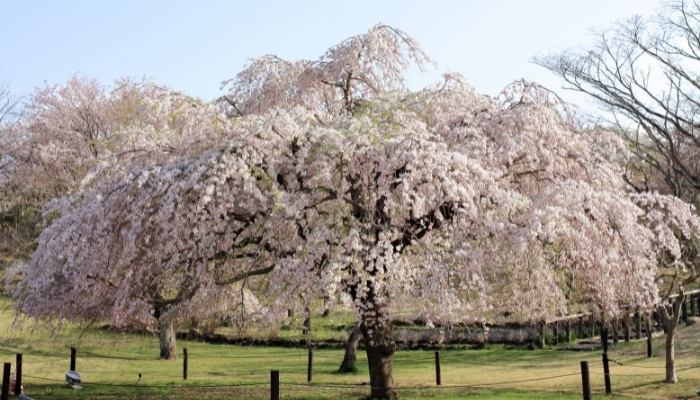
Most of us have heard of the beautiful cherry blossoms, cherry blossom festivals, and an old-time peace offering in 1912 from Japan as a gift.
With an amazing display of pink flowers in the spring, this tree should be planted for its showy spring season alone!
Its pink blooms give way to dark-green leaves in the late spring, turning gold, red, and bronze before dropping to the ground.
- Best for Grow Zones: 5 through 8
- Mature size: 20-30 feet tall and 15-20 feet wide
- Key advantages: Small habit, cold hardy, easy to grow
- Potential drawbacks: Can be messy during the bloom period with its petals dropping, susceptible to attacks from pests and diseases
11. Pin Oak
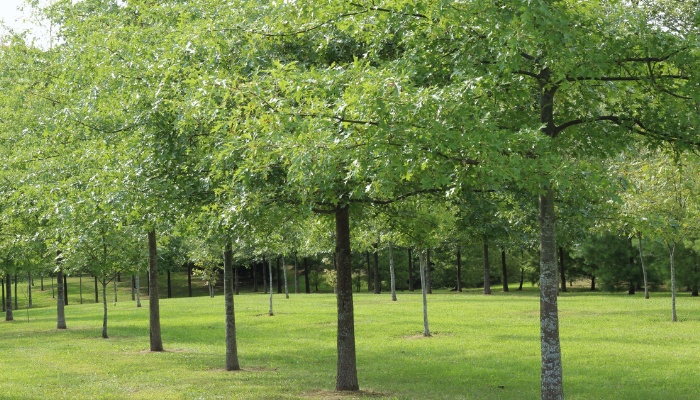
Quercus palustris
Commonly known as swamp Spanish oak, these trees grow in a large triangular-shaped habit.
The pin oak’s large glossy leaves grow in the spring and turn deep red, orange, and scarlet shades in the fall. The tree is most attractive in the fall when it begins to prepare for winter.
- Best for Grow Zones: 4 through 8
- Mature size: 60-70 feet tall and 25-40 feet wide
- Key advantages: Tolerant to wet conditions, large, fast growing
- Potential drawbacks: Drops acorns, does not do well in wet environments
12. Weeping Willow
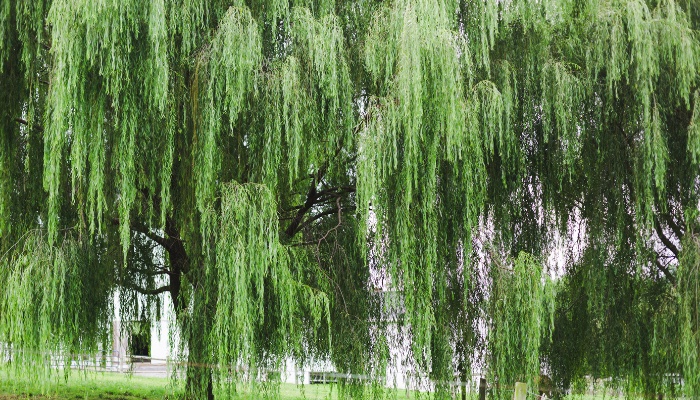
Salix babylonica
A look like no other tree, the weeping willow has long hanging branches that create movement in your landscape.
Its light green leaves are small and narrow, and they turn a golden-yellow color in the fall.
- Best for Grow Zones: 4 through 10
- Mature size: 30-40 feet tall and 30-40 feet wide
- Key advantages: Wet and drought tolerant, large size, great for water absorption
- Potential drawbacks: Extensive roots will break underground pipes and other structures
Final Thoughts
From small to large, if it’s a good shade tree, it’s listed here! Many have appealing characteristics in the spring with blooms and in the fall with colorful leaf displays.
Planting a variety of these species will give you something to admire throughout the four seasons. Plant one this year and enjoy it for all it gives!
